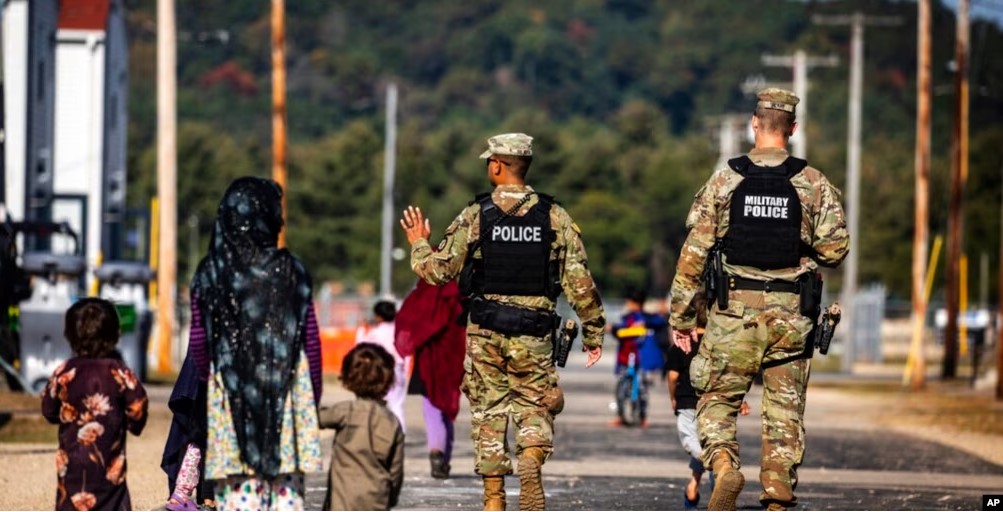World Refugee Day is celebrated around the world every June 20 and serves as a day to pay tribute to people who have been compelled to flee their homes.
Those who leave their home countries seeking safety are known as refugees or asylum-seekers.
In the United States, there are notable distinctions between these two statuses. While the terms are often used interchangeably, there are significant differences under U.S. immigration law when pursuing these statuses.
Who is a refugee?
The U.S. Refugee Admissions Program has established specific priorities for processing individuals and groups with special humanitarian concerns who seek entry into the United States.
The individuals referred by the United Nations High Commissioner for Refugees, U.S. embassies, or certain non-governmental organizations receive the utmost priority, P-1. Groups of special humanitarian concern are next in priority, P-2, followed by family reunification cases, P-3.
Applicants go through a pre-screening process at one of a handful of Resettlement Support Centers scattered around the world. This is followed by an interview conducted by a U.S. immigration officer, multiple security checks, and a medical examination to determine their eligibility for resettlement in the United States.
Once approved, an applicant is assigned to a sponsoring resettlement agency that provides assistance with services such as housing and employment upon the refugee’s arrival in the U.S.
Refugees receive employment authorization and can request documents to travel outside the United States. After one year, refugees may apply for lawful permanent status, also known as a green card. Five years after obtaining a green card, they can apply for U.S. citizenship.
Is it possible to count how many people are refugees worldwide?
According to a report released by the UNHCR, 110 million people are displaced worldwide, an increase of 19 million people compared with the end of 2021. That means 1 in every 74 people around the world has been forced to flee.
That number includes those displaced internally, which means they can’t go home but they have not left their country, asylum-seekers, and refugees.
Who is an asylum-seeker?
U.S. federal law allows people from other countries to seek asylum in the United States if they fear persecution at home. They must be present in the U.S. and prove a fear of persecution on one of five grounds: race, religion, nationality, political opinion or membership in a particular social class (the vaguest of the five categories, it can include things like sexuality or caste).
To be granted asylum, applicants must meet three requirements laid out by the U.N. Convention on Refugees in 1951 and adopted by the United States.
Applicants must prove:
They have a reasonable fear of persecution in their home country. Reasonable fear is defined by the United Nations as at least a 10% chance of persecution.
They must fear persecution on one of the five grounds.
They must prove the government of their home country is either involved in the persecution or unable to control it.
Are those at the U.S.-Mexico border refugees or asylum-seekers?
They are asylum-seekers. According to immigration lawyers, migrants are legally allowed to walk to a port of entry and ask for asylum from a U.S. immigration officer.
But currently, to manage the flow of migrants at the border, the U.S. government requires migrant to use the CBP One app to register and schedule arrivals at official U.S. points of entry.
Migrants arriving at the border are processed under Title 8, the U.S. law governing immigration.
That law allows migrants to seek asylum or other forms of relief within the United States if they have a legitimate fear of persecution in their home country.
Those who cross the border outside of official entry points without authorization will be apprehended.
They will either be swiftly removed from the United States or go through a lengthy deportation proceeding overseen by an immigration judge.
The latter typically applies to families, while single adults will generally undergo the fast removal process unless they can establish a credible fear of returning to their countries.
Can the government deny asylum cases?
Yes. The government can deny asylum by finding that an applicant failed to meet one of the requirements, by finding that conditions in their country have significantly changed since the application was made, or by finding the applicant could live safely in another part of their own country.
It is incumbent upon the asylum-seeker to show that their persecution derives from membership in one of the five categories and that the persecution or threats come from the government or forces the government can’t control.
What issues can cause an asylum claim to be rescinded?
Waiting more than one year after entry to the U.S. before filing an application for asylum, having been involved in persecution of another group of people, committing a serious crime, or being a threat to U.S. security can derail an asylum claim.
(VOA)









Comment